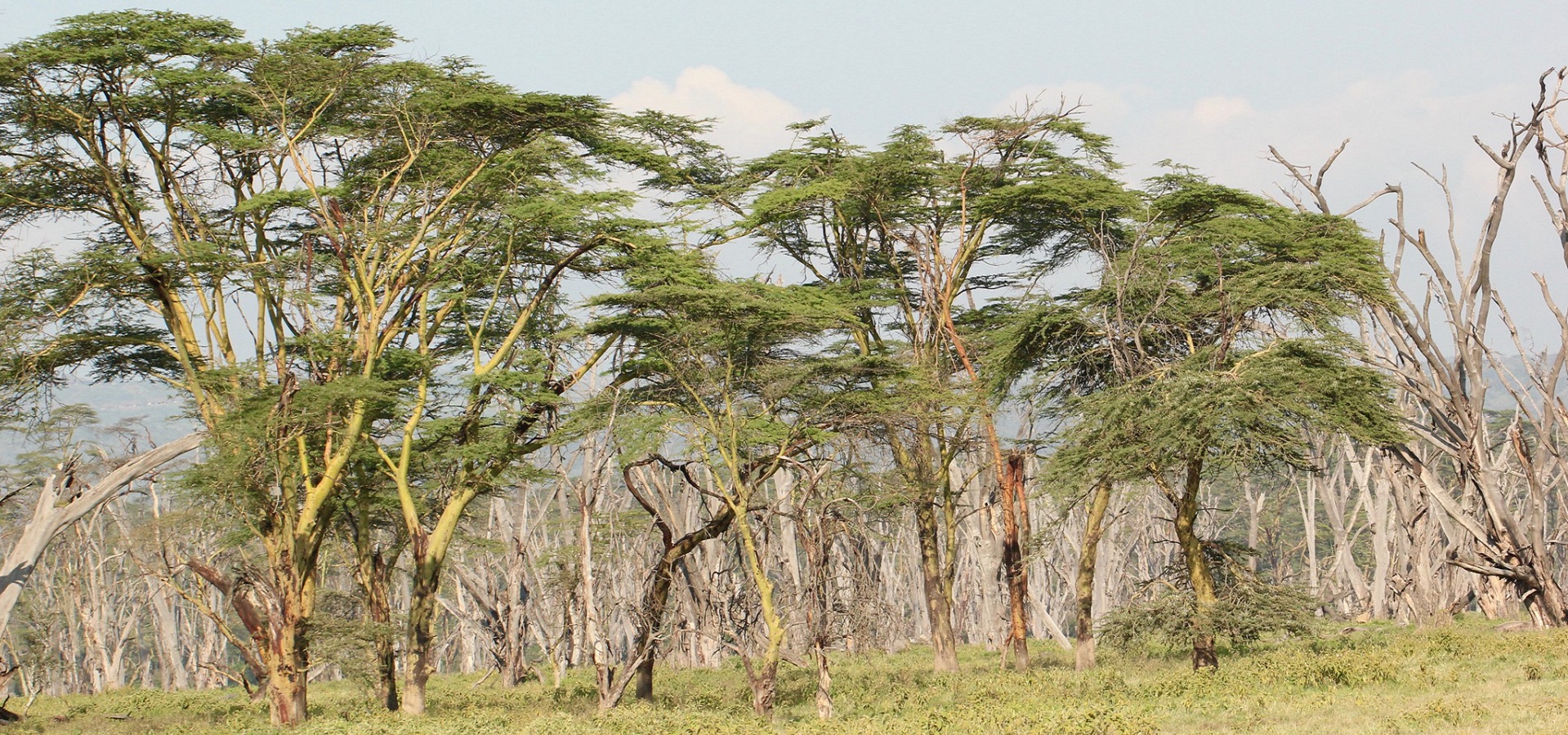Africa’s contribution to the global share of the carbon pollution that is destabilising Earth’s climate is relatively small. A just transition for the continent needs, therefore, to lean towards adapting to an unstable climate, ahead of aggressive mitigation efforts. A case study from South Africa shows how a Green New Deal-approach could help restore damaged ecosystems, buffer communities against climate shocks, and boost job opportunities in a country with high unemployment. Leonie Joubert reports.

The water consumption of trees is increasingly becoming a challenge for the ecosystem. (CC BY 2.0, Kandukuru Nagarjun )
South Africa is battling to mop up a form of pollution that compares with an oil spill. But what makes this pollution so difficult to contain is that, once it starts, it self-generates and becomes unstoppable. The pollution spill we’re talking about here is in the form of invasive trees.
There are a few problematic woody tree species that have been introduced into the country from many parts of the world, but mostly from Australia, Europe, and the United States, such as Australian wattle and eucalyptus species, and various pines. These are fast-growing, and thirsty. They tend to spilled into water catchments and river systems, sucking them dry. They change the soil structure and kill off the indigenous ground cover, leaving the earth prone to erosion. Because they are large, woody trees, they add to the fuel-load, so when fires sweep through, they burn far hotter and faster than fires otherwise would in the natural vegetation.
In a country that is already water-scarce, this biological “pollution” poses a serious threat to water resources, farming and food production, and healthy functioning ecosystems. This is why government has invested millions in projects geared towards clearing the worst infestations of these trees, and restoring water catchments damaged by the encroaching trees.
Climate change is already leaving parts of South Africa hotter and drier, and with longer droughts and less predictable rainfall. Clearing invasive trees and restoring habitats — particularly those linked with a healthy water system — is critical for buffering the country against the future threat of an unstable climate.
South Africa’s “Working for Water” initiative has received global attention for its success in putting previously unemployed people to work, while also tackling the invasive tree problem. Working for Water uses a two-pronged approach: it is positioned as an expanded public works initiative, where the state funds teams of people to clear trees in areas that are heavily invaded, and the felled wood can be sold as firewood or used as building material or other purposes. People are then also employed on projects that rehabilitate the cleared areas. This includes repairing river banks damaged by erosion, restoring the natural plant life, and helping wetlands recover.
Green New Deal for Africa: an adaptation focus
The Green New Deal is being floated as a way to help countries around the world transition fairly to a low-carbon economic system. It has its roots in the post-World War 1 depression-era United States. State-funded public works projects were rolled out widely as a way of putting people to work, getting money back into people’s pockets, and stimulating the economy.
An initiative like Working for Water falls squarely into this kind of approach.
In mid-October, a group of leading South African scientists released a study in which they listed the five biggest ‘multiplier’ threats to the country, in the context of climate collapse. In addition to a ‘badly handled transition to low-carbon energy’, which has been a central focus of this column in recent years, scientists ranked disrupted ecosystems, food insecurity, and the viability of the agricultural sector as the other grave concerns.
South Africa is the biggest carbon-polluting country on the continent. It is understandable that efforts to decarbonise its coal-reliant economy are centre-stage, along with the need for a just transition for the people whose jobs depend on mining and related industries.
And yet little attention is given to the opportunity presented by ecosystem restoration projects for achieving the needs of a healthy, climate-resilient environment, water security (which feeds into food security), and job creation.
Tackling the problem of these water-thirsty, fire-prone, ecosystem-damaging invasive woody tree species in South Africa needs to ramp up. Researchers have shown in recent years that while the funds invested in Working for Water initiatives has been money well spent, they also showed that government has not spent nearly enough to stay ahead of the spreading pollution.
Slowing this biological pollution is a never-ending battle because unlike an oil spill, where the pollution can be shut off at source, these trees keep on reproducing and spreading. Once the ‘spill’ has gained enough momentum, it’s impossible to stop it completely.
While South Africa needs to increase its investments in these projects significantly, the African continent can nevertheless draw from this tried-and-tested model, and which can be scaled up with the political will, the necessary funding, and the right institutional arrangements.